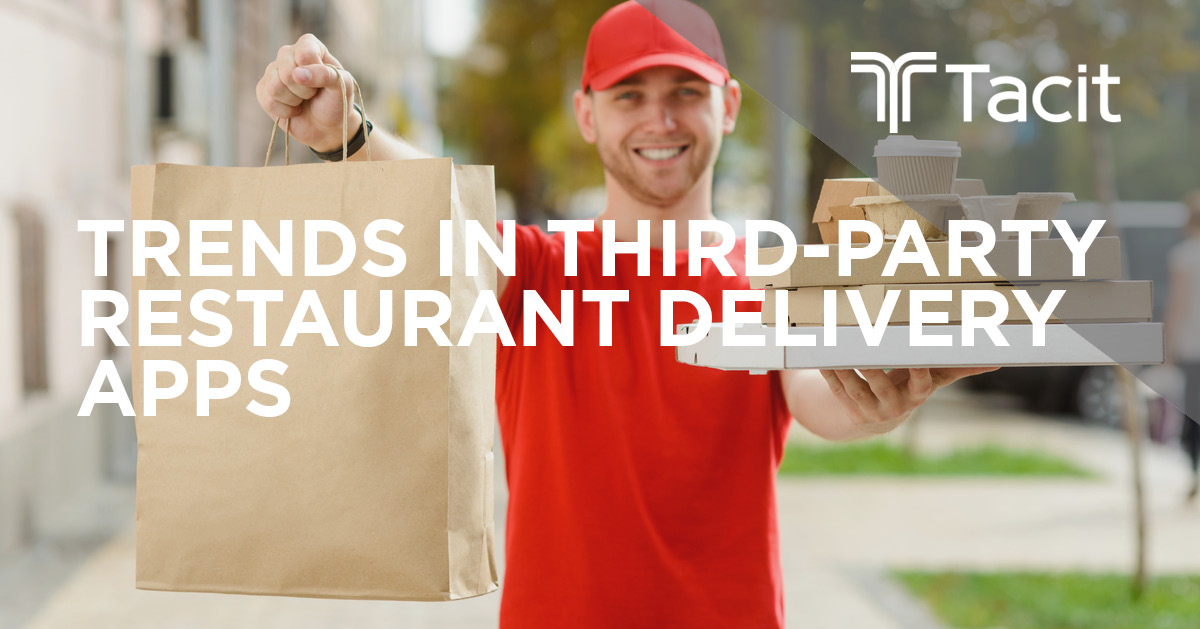
30 Jul Trends in Third-Party Restaurant Delivery Apps
As explained by Restaurant Dive, the overall restaurant market is not expected to grow significantly in 2019, but that does not mean demand will stay stagnant. According to QSR magazine, the notion of third-party delivery is rising to become its own market, relying heavily on the ability of the restaurant industry to provide its products. Think of the traditional supply chain. When online ordering surges, brick-and-mortars may remain stagnant and reap the rewards of an overhead-less establishment. The same applies to the rise of third-party restaurant delivery. To maintain competitive advantage, restaurant operators need to understand the top trends in third-party restaurant delivery apps and build their operations around them.
More Third-Party Restaurant Delivery Apps Are Coming Online
The number of third-party restaurant delivery apps available is increasing. At one point, Uber Eats and DoorDash were about the only options, but recent years have seen numerous delivery startups make a splash in the market. Today, consumers have at least six available apps with national recognition, including Favor, Uber Eats, DoorDash, GrubHub, and more. In addition, local markets are developing apps for their areas, and the age of distinction will become evident as companies look to differentiate their service and capabilities.
Mobile Apps Are Becoming the New Standard for Delivery
While restaurants still need branded, online ordering platforms, and unique apps for use, the likelihood customers will download more than three ordering apps remains slim. Instead of trying to get customers to order from unique, branded apps, more companies will turn to third-party delivery to enter the market with low overhead. In other words, mobile apps will become the standard for ordering.
Third-Party Delivery Empowers Virtual Kitchens
Another factor affecting the third-party delivery market is the idea of virtual kitchens. Unlike traditional restaurants, virtual kitchens lack the brick-and-mortar storefronts, and their foods are available entirely through online ordering platforms. To keep costs low, many of these kitchens operate through third-party apps, providing an immediate way for restaurants to begin reaching customers, especially those interested in local businesses.
Outsourced Delivery Will Drive a Surge in Fast-Casual Dining
Another trend in third-party delivery is the changing perception of fast-casual dining. While third-party delivery has been a go-to practice for fast-casual restaurants in recent years, even fine dining establishments are coming on board. Thus, restaurants will see more competition, and it will be on the third-party developers to ensure customers see their favorite restaurants. At the same time, these restaurants must evolve their systems and practices to integrate their existing point of sale (POS) systems with third-party software, eliminating risks of order errors and delays.
Accuracy and Quality Continue to Replace Speed
As explained by Foodable Network, third-party delivery is changing how restaurants approach delivery. While companies have always vied for 100% accuracy on orders, it has often taken a backseat to speed. With the rise of multiple third-party delivery apps, it is not enough to offer speed and service; these apps must ensure accuracy. Ultimately, the customer will likely abandon a brand after negative experiences, and since food tastes are a highly subjective subject, accuracy and quality will begin to replace speed as the qualities most in-demand for third-party delivery.
Embrace Third-Party Restaurant Delivery Apps in Your Organization
Third-party restaurant delivery apps are here to stay. They are growing in both rural and urban areas, and more customers are opting to have their favorite restaurants delivered, despite paying a premium for delivery compared to traditional restaurant delivery costs. It is time for your organization to offer delivery via a third-party app too. If your organization is still not sure where you stand with implementation or integration of third-party restaurant delivery apps into existing POS, visit Tacit online to get started.

Pingback:Building the Business Case for Restaurant Delivery via Third-Party & Other Digital Ordering Channels
Posted at 13:35h, 04 August[…] in recent years, and Uber’s total value has risen to $71.5 billion to date. The introduction of third-party delivery apps has been a game-changer for the industry, and global online food ordering is expanding at a rate of […]
Pingback:Room Service Digital Integration: Why Travelers Want Branded and 3rd Party Service
Posted at 13:46h, 04 August[…] the rise of third-party services in the restaurant industry, room service will naturally see some effect. Travelers have access to more delivery options than […]
Pingback:How to Create Your Own Branded Digital Food Ordering Experience
Posted at 07:40h, 05 August[…] 0 Branded Ordering Digital Ordering August 1, […]